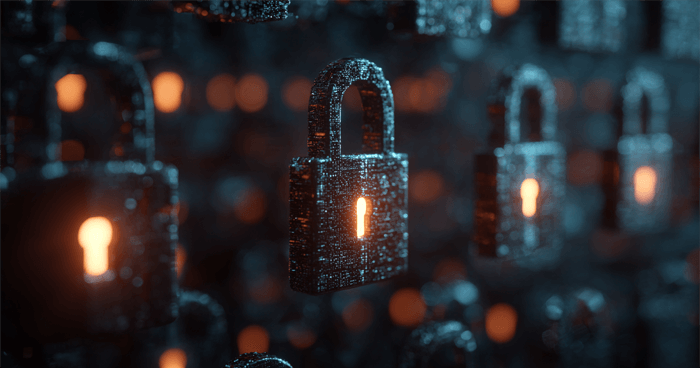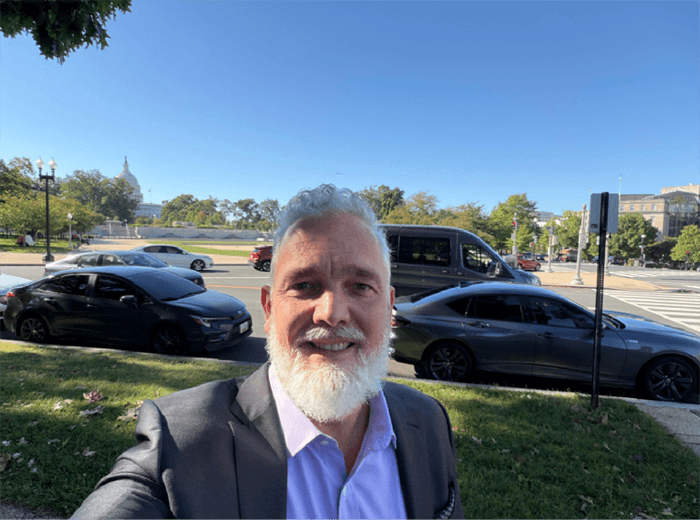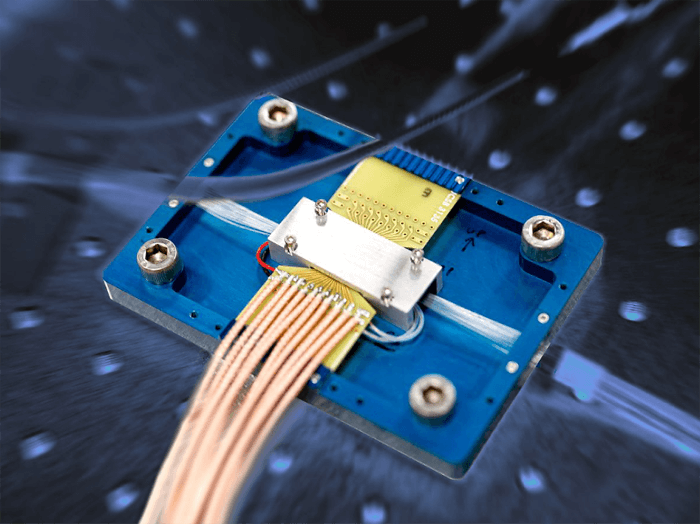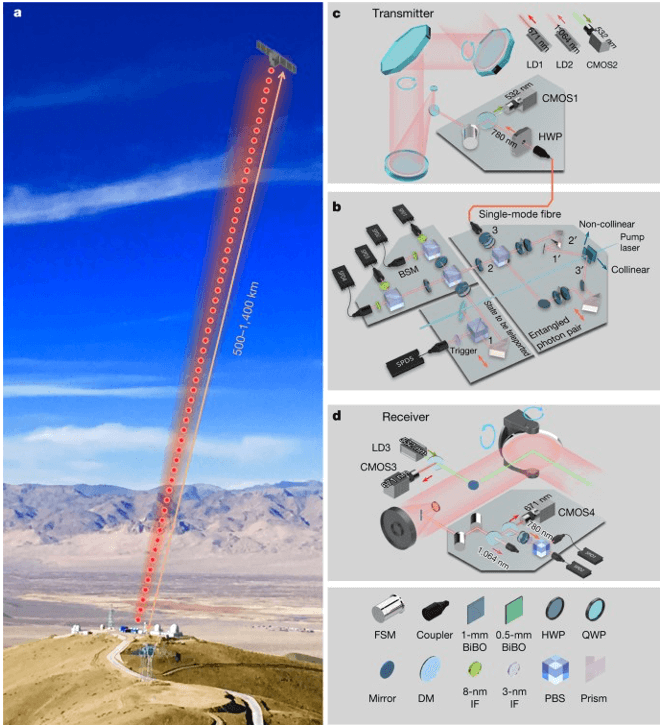Managing Editor’s Note: It’s the last day of Quantum Week here at The Bleeding Edge…
We hope you’ve enjoyed reading about some of the incredible advancements and innovations we’re seeing in the quantum computing industry… and some of what we have to look forward to in the race for universal fault-tolerant quantum computers – the holy grail of quantum computing.
It’s all been leading up to tonight’s big Quantum Flashpoint strategy session. In just a few hours, Jeff will discuss the opportunity that the coming era of advanced quantum technology represents… as well as three little-known companies he’s got his eye on and what makes them stand out among a host of other quantum technology players.
It’s not too late to go here and automatically add your name to the guest list. We look forward to seeing you there tonight at 8 p.m. ET.

My goal here at The Bleeding Edge is simple: To keep my subscribers ahead of the game and well-informed about the most interesting and most transformational technologies impacting our world.
And on that note, I hope you have enjoyed Quantum Week here at The Bleeding Edge. Please don’t forget to tune into my capstone event tonight, Quantum Flashpoint. I invite everyone to join me at 8 p.m. ET tonight.
I’ve been researching and writing about quantum computing and quantum mechanics for years.
Years before the technology became a headline on mainstream media outlets.
And now it is happening.
The last 12 months have been the inflection point from early experiments to real adoption.
Quantum computing has become a very real business.
IonQ (IONQ), for example, will generate about $91 million in revenue this year from selling its quantum computing technology. Real revenue, incredible technology, and exponential growth rates for years to come.
Before we get into tonight’s exciting event, we’re going to step back to see the big picture on the ramifications of the rapid adoption of quantum technology.
It’s safe to say that most people would think that quantum computing is just about superpowered supercomputers – capable of incredible feats that are otherwise impossible for classical supercomputers.
That’s true, but it is only a small part of the picture.
A Trifecta of Priorities
The employment of quantum computers and post-quantum cryptography standards, as established by the National Institute of Standards and Technology (NIST), will require an upgrade of the entire internet.
Every electronics device that is connected to the internet – our worldwide communications infrastructure – will need to be upgraded in one way or another.
And not slowly, there is a sense of urgency given the seemingly sudden and rapid progress being made with quantum computers.
This moment in time, and for the next five to seven years, will require the largest internet upgrade in history.
The reality is that none of our current cryptographic standards used for wireline and wireless communications is safe from quantum computers.
And the latest breakthroughs in quantum computing hardware and quantum error correction technology have created an incredible sense of urgency for those in industry and government – those that are particularly sensitive to data and communications security.
I was in Washington, D.C., last week for an important conference, where I listened to and spoke with many policymakers, government officials, and scientists.

There was one comment that stood out to me, made by a very senior official from the Department of Energy – the kind of official that requires a security detail when speaking.
When referring to the government’s technological priorities, he said, it’s “AI, quantum, and fusion.” All three technologies and massive growth industries that I have spent years helping my subscribers get out in front of.
And it makes perfect sense.
All three technologies are inextricably linked.
And U.S. government leadership in all three sectors is a matter of national security.
Quantum computing enables even more powerful artificial intelligence. And nuclear fusion is the most critical, long-term answer to providing the additional energy required to fuel growth in AI with cheap, clean, limitless energy production with very limited radioactive byproducts.
Aside from super-powerful quantum computers, quantum technology will enable something that almost no one is speaking about – the quantum internet.
Quantum Communications
Quantum technology is just as important to quantum communications as it is to quantum computing.
It enables perfectly secure, unhackable communications between any two parties on Earth.
And for that to happen, the “internet” needs the largest upgrade in its history.
For years, networking giants like Cisco (CSCO) have been quietly hard at work building the hardware to enable quantum networking – the tech to power unhackable quantum communications.
Earlier this year, Cisco announced its quantum networking semiconductor, upon which Cisco’s quantum networking software can run.

Cisco’s Quantum Networking Chip | Source: Cisco
This is where quantum research meets reality.
Cisco’s quantum networking system can inject up to 200 million quantum entangled photon pairs a second. We can think of this as an enabler for the distribution of quantum keys and ultimately unhackable quantum communications.
This system is capable of operating on all standard telecommunications wavelengths that are used today over fiber optic networks. This simply means that it can use our existing fiber optic infrastructure for the upgraded quantum-enabled networking hardware.
While the technology is extremely complex, the concept is easy to understand.
Two photons – that is, two quantum bits (qubits) – are entangled with one another at the origin, and one of the photons is carefully sent over a fiber optic cable to its end destination.
Longtime readers will recall that quantum entanglement is when quantum particles become interdependent, even when they are not physically in contact.
When two particles are in a state of quantum entanglement, their states are dependent on each other… even when hundreds of miles apart. When the quantum state of one particle changes, so does the other.
Now, say there are two entangled photons in two different locations…
When the state of the origin photon (qubit) changes, so does the state of the destination photon (qubit). It happens instantaneously.
That’s the magic of quantum mechanics and quantum entanglement. And as long as those entangled qubits remain in their state of superposition, information can be transmitted in a completely secure fashion in real-time.
This appearance of “magic” is why Albert Einstein referred to quantum entanglement as “spooky action at a distance.”
And these aren’t short distances either.
QKD: The Foundation for Quantum Communications
In 2017, a Chinese research group demonstrated quantum teleportation over a distance of 1,400 kilometers.
Two quantum bits were entangled at a base station in Ngari, Tibet.
One of the qubits, a photon, was transmitted to the Micius satellite in low-Earth orbit… via an optical uplink.
Then, the quantum state of a third qubit was “teleported” (i.e., no photon was transmitted) successfully via the entanglement of the first two qubits.

Source: Ground to Satellite Quantum Teleportation, Ji-Gang Ren, et. al.
So, whether it is Earth-to-satellite or ground-based communications over fiber optic networks, it’s this practical implementation of quantum entanglement in quantum networking that enables quantum key distribution (QKD).
QKD is the foundation for being able to send and receive quantum-resistant communications that are safe from hacking with quantum computers.
Practically, what does this mean?
All kinds of internet routing and networking equipment – that relies on public key cryptography – will have to be migrated to support quantum key distribution and post-quantum cryptography standards.
Simple layer 2 switches probably won’t need hardware upgrades, but advanced switches that use secure protocols will need to be upgraded. At a minimum, they will require software and firmware upgrades to support post-quantum cryptography standards.
Modern smartphones will require software and firmware updates at a minimum.
PCs and laptop computers will all require software and firmware updates at a minimum.
Any electronics communications device of age – roughly six years or older – will have to be replaced entirely to employ post-quantum cryptography standards. Those that don’t will be easily hackable by quantum computers.
What’s important to understand is that this upgrade process has already started.
Stepping into a Quantum World
Governments are keenly aware of the urgency, as are financial services companies, and those in industries where security is a necessity.
A quantum internet provides for unbreakable security.
The distribution of quantum keys and the employment of NIST post-quantum standards are what make this all possible.
And that means the entire internet infrastructure needs to be upgraded for the distribution of these keys.
Quantum networks will require extremely precise timing and synchronization to function properly.
This will need to happen at a level that has not yet been deployed in today’s internet infrastructure. Again, this is a global upgrade of the internet.
And this new quantum networking technology will enable quantum computers at different locations to be connected using the quantum internet.
It’s like linking numerous quantum computers using quantum entanglement to enable parallel operations of multiple quantum computers.
There are no words to describe what this means yet.
It’s like a hyper-exponential increase in quantum computational power.
We are on the cusp of stepping into a quantum world, transitioning to a quantum internet enabled by quantum computers, quantum networking, and spooky action at a distance – quantum entanglement.
Jeff
Want more stories like this one?
The Bleeding Edge is the only free newsletter that delivers daily insights and information from the high-tech world as well as topics and trends relevant to investments.
